Trekking Chimpanzees Uganda. When someone mentions Uganda, located in East Africa, I think of two things. Gorillas and Idi Amin. Uganda is well-known for tracking gorillas in the wild. And Idi Amin was a larger than life figure who ruled Uganda in the 1970s after overthrowing the government, and it is estimated that the General was responsible for the deaths of up to 500,000 people.
While trekking for gorillas is a must-do experience, another incredible opportunity is trekking for chimpanzees.
Chimps are considered an endangered species and number somewhere between 170,000 – 300,000 chimps that can be found in West, Central, and East Africa. Chimps are threatened by poaching, disease, and loss of habitat.
Kibale National Park is a 296 square mile park located in Western Uganda. The park is a thick, moist evergreen rain forest that ranges from 3,600 to 5,200 feet in elevation. The park was gazetted in 1932 and it is well-known for trekking for chimps. Over 1,450 chimpanzees make their home in this park.
The adult male chimpanzee weigh up to 130 pounds, and when standing they can measure over 5 feet tall. The chimp is an omnivorous frugivore. What’s that mean? Chimps like to eat fruit but also munch on leaves, seeds, stems and every now and then some insects. Chimps in the wild live up to 40 years.

Check out my tour and agenda with G Adventures. I was invited by G Adventures to attend this tour. And I will earn a fee if you book a trip with G.
I am a G Wanderer, part of a team of content creators who work with G Adventures. I was invited to join the 8-day Culture & Wildlife of Uganda and Rwanda and share my experiences and impressions traveling with G.
As you might have heard, chimps are our close cousins as we share 98% of the same DNA. Chimps are socialable as well as intelligent, having the ability to use tools. These skills have been passed on from one generation to another. Chimps socialize in groups of 10-100 members but will also travel independently or in smaller groups at times. Chimps spend time grooming each other and demonstrate affection by kissing or holding hands. If you are sick, you will not be allowed to trek, since there is a great risk of passing on your sickness to the chimps (since we share DNA).
I arrived at Kibale National Park to the ranger’s station after lunch. We gathered in the station to receive our briefing from the ranger.
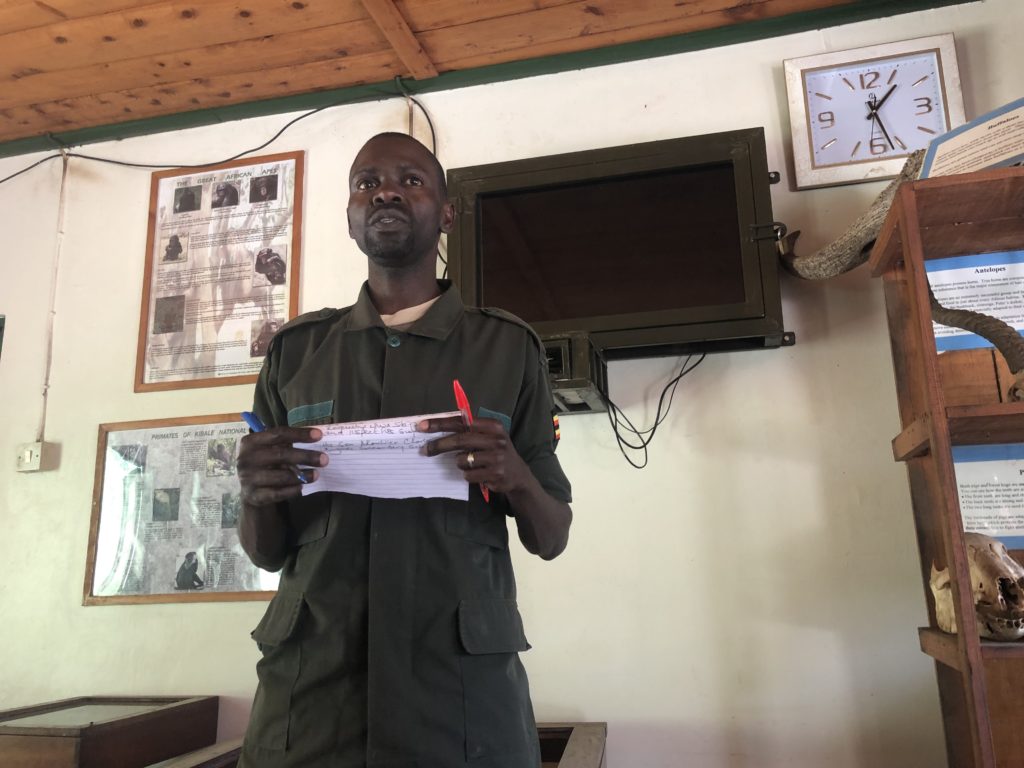
Groups are broken into a maximum of 12 people. You are limited to one hour observing the chimps once you meet them. You must maintain a distance of 24 feet when observing the chimpanzees. Some of the 1,450 chimps found in Kibale are habituated, simply meaning that chimps are used to being in the company of humans. The process of the chimps being habituated take up to two years. There are two chimp treks a day in Kibale, a morning and afternoon trek.
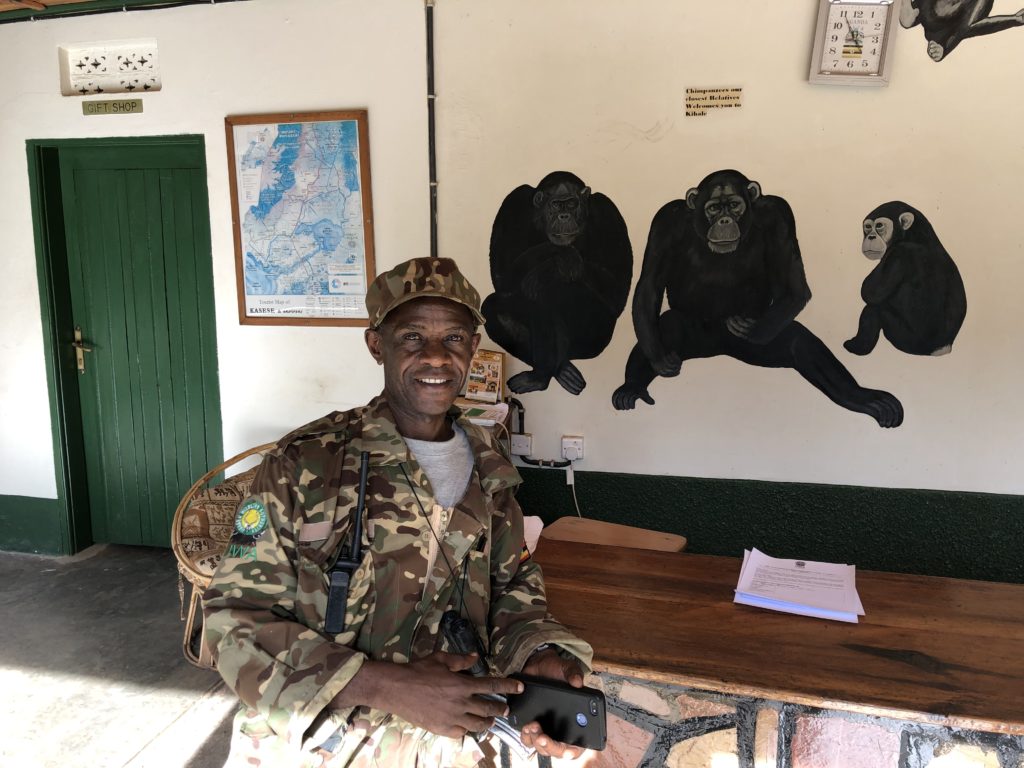
Meeting our lead ranger
Our briefing ended, and we disbursed into our groups, being led by a ranger in additional to armed guards (in the minute chance, that a chimp becomes aggressive). Many of the chimps are tracked during the day by trackers, typically making it easy for the rangers to guide you to see the chimps. With this in mind, your trek will typically last approximately three hours with one hour spent with the chimps.

Starting our trek on the path
Your trek will take place both on trails and off-trail through the dense forest. And as noted earlier, your trek will take place at differing and higher elevations. My trek at times was effortless on cleared paths, and at other times the trek became a bit more strenuous as we headed off-trail and at steeper gradients. The humidity and heat permeated my clothes. Sweat beaded on my forehead, cascading down my face.
I advise you to wear both pants and long sleeve shirts. Otherwise, you will be scratched often especially when you get off-trail. Also, advisable, is to wear gloves since you will be grabbing brush, that will occasionally have thorns.
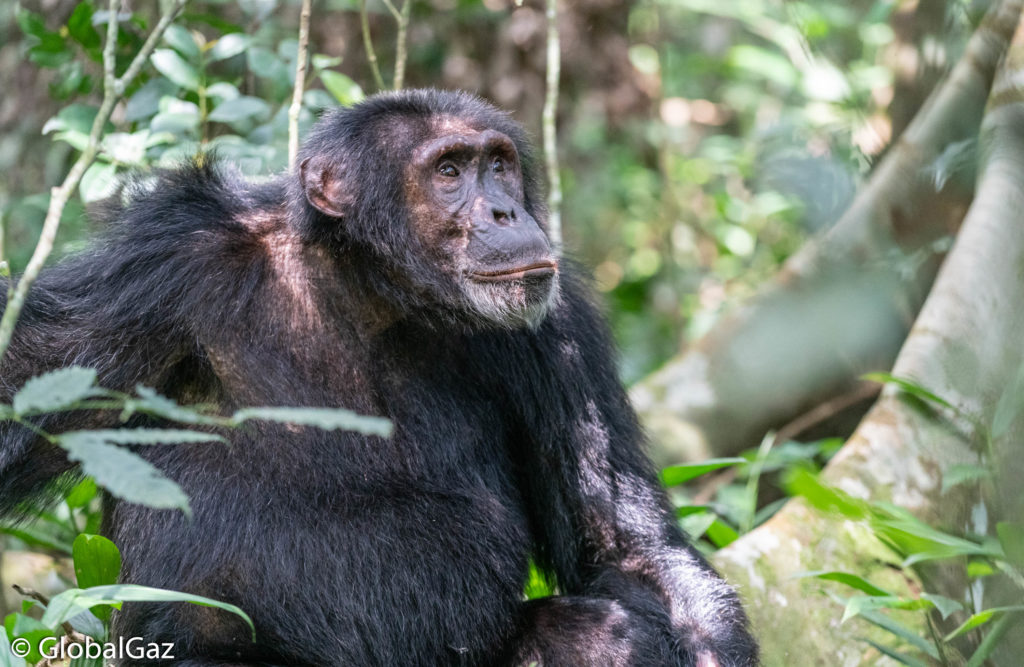
After scrambling up and down several hills, off-trail, our group heard the howling of nearby chimps. The hairs on my arms stood on its ends. I felt a quick dose of adrenaline. And within moments, I gazed at two chimps, lazily lounging in the forest snacking on some stems and roots.
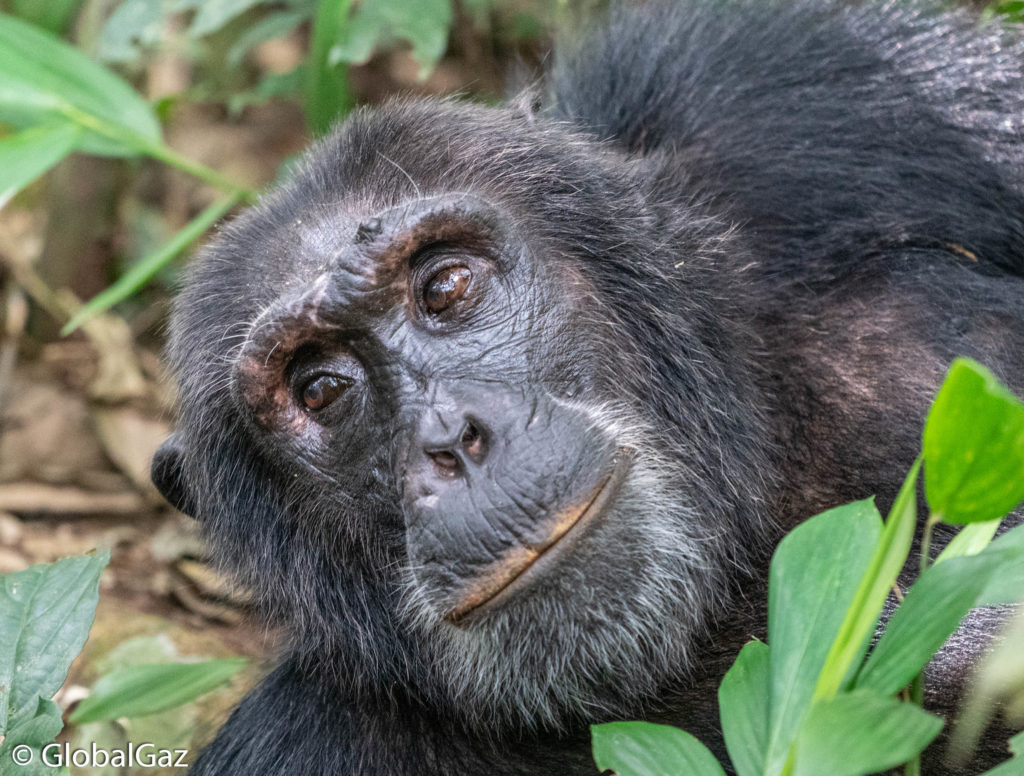
The next hour was spent in amazement and in awe. Seeing these chimps, our close cousins, in such close proximity was incredibly rewarding. I observed their human-like facial expressions, occasionally locking eyes with the chimps. This was a special experience.
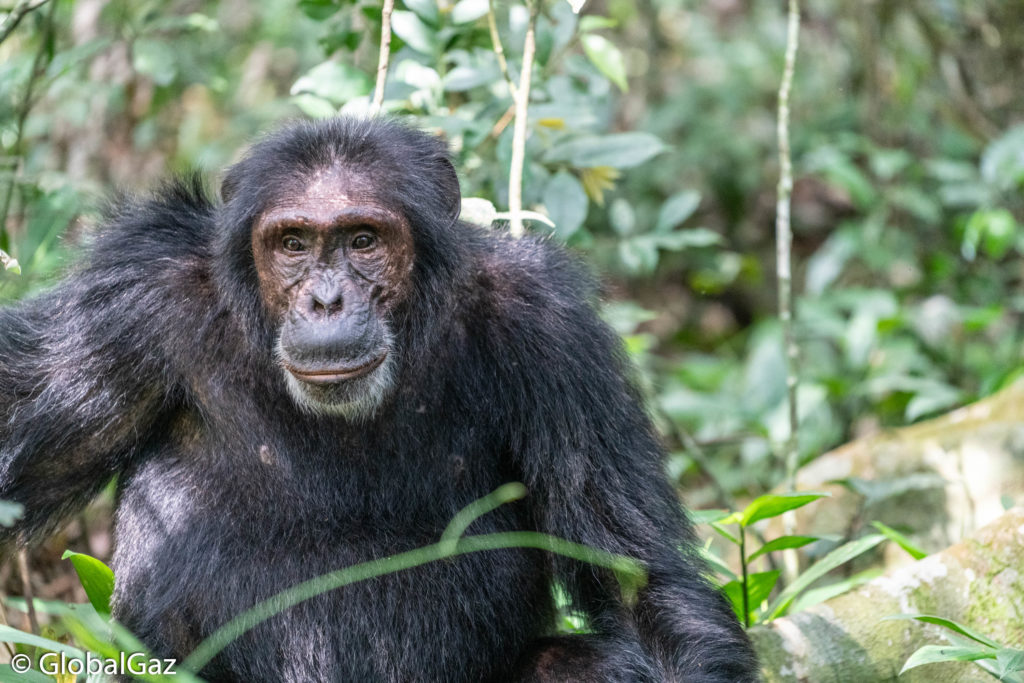
Jane Goodall is best known for her groundbreaking 55-year study of wild chimpanzees. Goodall noted referring to the chimps that she observed that, “it isn’t only human beings who have personality, who are capable of rational thought and emotions like joy and sorrow.” And as I observed the chimps, I felt Goodall’s words rang true. G Adventures has collaborated with the Jane Goodall Institute creating a collection of 20 wildlife tours. Jane Goodall has endeavored for decades to develop a stronger understanding of primates and G Adventures is proud to support the mission to protect wildlife and help local communities.

Trekking Chimpanzees Uganda
And near Kibale National Park is the village of Bigodi. Read about my Cultural Walk in Bigodi.

Photos From Chernobyl
Sign up to receive your free copy of Photos From Chernobyl. Over 100 photos from the Chernobyl Exclusion Zone.

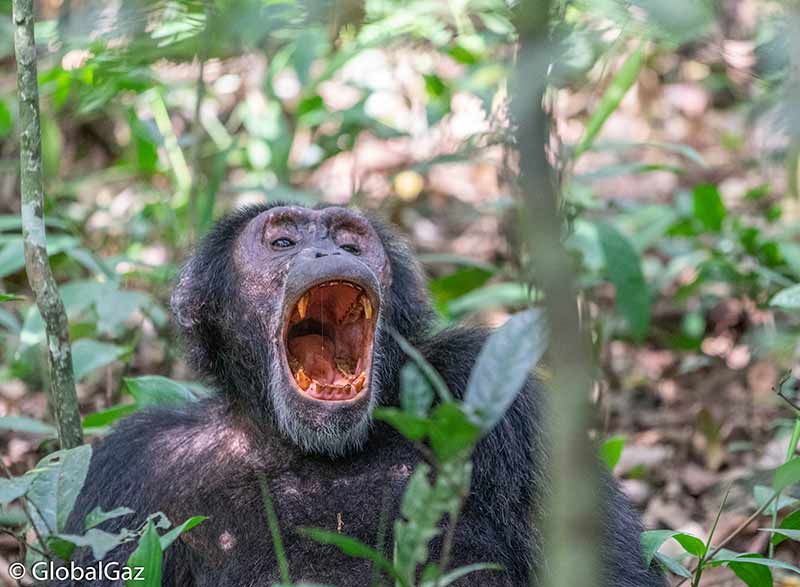
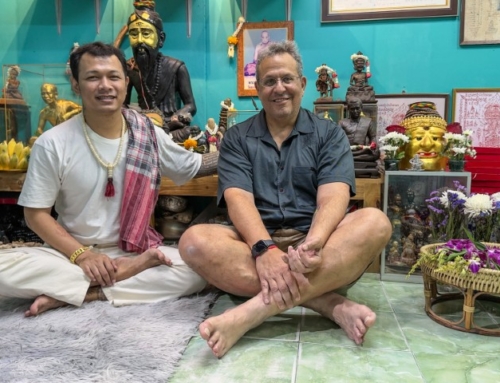
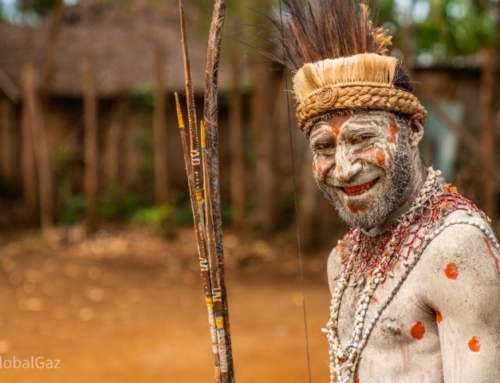
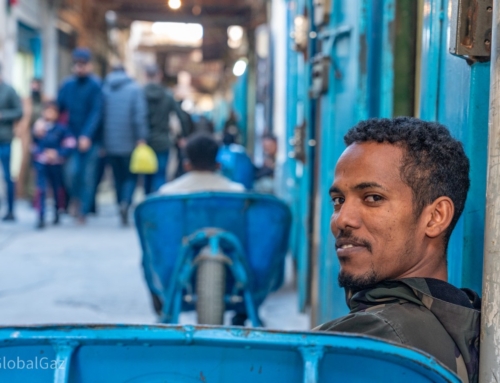


[…] out chimpanzee trekking in Kibale National Park and a Cultural Walk in the village of […]
[…] more about my trip with G Adventures to Uganda and Rwanda. Trekking with chimps, taking a cultural walk in the village of Bigodi, and safari in the Queen Elizabeth National […]
[…] Trekking for chimpanzees […]
[…] Trekking for chimpanzees […]
[…] G and was fortunate to cross another bucket list item off the list. Yes, trekking with gorillas and chimps. And it was awesome to be so close to our close […]